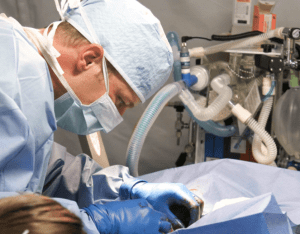While medical errors and malpractice may seem similar, it’s essential to understand the critical distinctions between the two.
When seeking healthcare services, patients place their trust in the expertise of medical professionals. However, at times, errors can occur, leading to unexpected and often severe consequences. These errors may sometimes be classified as malpractice, a term that often breeds confusion among patients. This post aims to delineate the difference between medical errors and malpractice, providing a detailed analysis from the perspective of a Boca Raton Lawyer.
Understanding Medical Errors
Medical errors refer to preventable adverse effects of care, whether evident or not, and whether they are caused by something a medical professional did (commission) or something they didn’t do (omission). These errors can occur at any stage of the healthcare process, from diagnosis and treatment to aftercare and follow-up procedures. Medical errors can be as simple as a clerical error, such as a misspelled name or an incorrect dosage on a prescription, or more complex, like a surgical error or misdiagnosis.
While the distinction between medical errors and malpractice may seem straightforward, the nuances and complexities surrounding these terms require further exploration. Understanding the fine line that separates them is crucial for patients seeking legal recourse and justice for harm caused by medical negligence.
Medical Errors:
Medical errors encompass a broad range of mistakes that can occur during the course of medical treatment. These errors can arise from various factors, including human error, system failures, miscommunication, or unforeseen complications. It’s important to note that not all medical errors amount to malpractice. Many errors are considered unfortunate but unintentional and do not involve negligence on the part of the healthcare provider.
Unforeseen complications, for instance, can arise despite the best efforts and adherence to the standard of care by medical professionals. These complications may be inherent risks associated with a particular procedure or treatment. In such cases, the healthcare provider may have acted reasonably and appropriately, but an unexpected outcome occurred.
Honest mistakes, such as medication errors due to illegible handwriting or a miscommunication during a shift change, can also fall under the category of medical errors. These mistakes are unintentional and not indicative of negligence or a breach in the standard of care.
Medical Malpractice:
Medical malpractice, in contrast, involves a higher degree of negligence or deviation from the standard of care. It occurs when a healthcare provider fails to meet the expected level of skill, care, or judgment in the treatment of a patient, resulting in harm. For an incident to be classified as medical malpractice, three key elements must generally be established: a violation of the standard of care, an injury caused by the negligence, and significant damages resulting from the injury.
Negligence in medical malpractice cases refers to a failure to act in a manner that a reasonably prudent healthcare provider would have under similar circumstances. This negligence can manifest in various ways, such as a failure to diagnose or misdiagnosis, surgical errors, medication errors, improper treatment, inadequate follow-up care, or failure to obtain informed consent.
To illustrate the distinction further, let’s consider the example of a surgeon operating on the wrong body part. If this occurs due to a clerical error or misunderstanding, it would likely be considered a medical error rather than malpractice. The surgeon may have acted with the intention of providing proper care but was led astray by external factors beyond their control.
However, if the surgeon was aware they were operating on the wrong body part but proceeded with the surgery anyway, this would likely be deemed medical malpractice. The surgeon’s actions in this scenario demonstrate a breach of the standard of care, as a reasonably prudent surgeon would not have operated on the wrong body part knowingly.
Proving Medical Malpractice:

Establishing medical malpractice requires demonstrating not only that an error occurred but also that the error resulted from a deviation from the standard of care. This often necessitates expert testimony from medical professionals who can assess the healthcare provider’s actions or inactions and determine whether they fell below the expected standard.
Additionally, it must be shown that the patient suffered harm as a direct result of the negligence. This harm can encompass physical injuries, emotional distress, financial losses, or other damages. The damages must be significant enough to warrant legal action and compensatory measures.
While medical errors and malpractice may seem similar, it’s essential to understand the critical distinctions between the two. These differences could significantly impact your legal course of action if you believe you or a loved one has been harmed due to a medical professional’s care. Remember, each case is unique, and navigating the complexities of medical malpractice law requires a deep understanding of legal and medical principles.
Therefore, if you find yourself in such a situation, reaching out to a professional can make all the difference. A Boca Raton Medical Malpractice Attorney can provide the legal expertise needed to thoroughly examine your case, evaluate the nature of the medical error or negligence involved, and guide you on the appropriate course of action. They can be your advocate, ensuring your rights are protected as they tirelessly work to seek the justice and compensation you deserve.


Join the conversation!